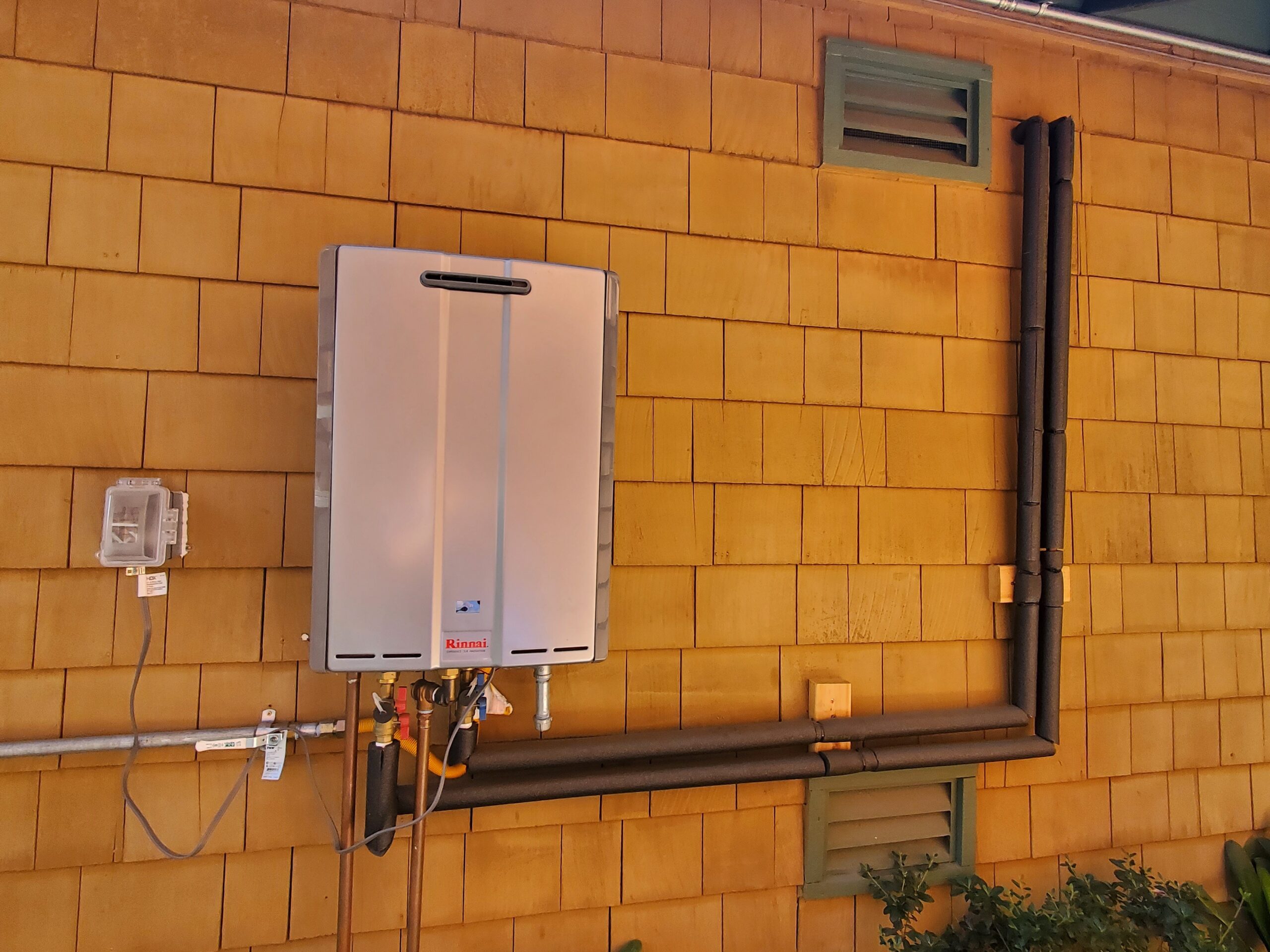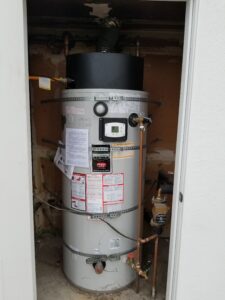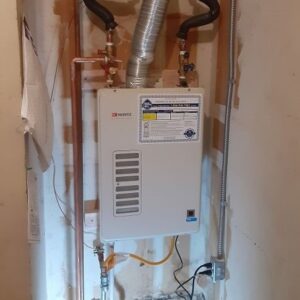
With Yana Carpenter of Water Heaters Only, Inc.
Water heaters have been around for more than a century, but the past two decades have seen a flurry of technological innovation go into these staple household fixtures. What’s more, the pace of innovation shows no signs of slowing down. We sat down with Yana Carpenter, marketing director at Water Heaters Only, Inc., to discuss what’s driving these advancements in water heater technology, what options are available to homeowners and what further innovations might be on the horizon.
The energy factor
Necessity is the mother of invention. This age-old aphorism rings true in many instances, and water heater technology is no exception. According to Ms. Carpenter, a principal driver of water heater innovation is the need to comply with rising energy efficiency standards. “A lot of the innovation we’re seeing is driven by the energy requirements from federal, state and local governments,” she explains. “Here in California, the Title 24 energy code requires certain levels of efficiency ratings, and these levels are plotted out to rise over time. Since water heaters need to comply with these rising standards, manufacturers have to continually work to increase the energy efficiency of their products.”
Rising energy standards are also shaping water heater technology by facilitating a push toward clean energy, which largely consists of a shift from reliance on fossil fuels to electricity. Some California cities have already passed ordinances requiring all new construction housing to be 100% powered by electricity. Since water heaters are traditionally gas-powered appliances, manufacturers have been pressed to innovate by developing all-electric water heater designs.
The heating edge: Heat pump water heaters
California’s emphasis on clean energy is manifested in a recent campaign to promote a cutting-edge water heater model: heat pump water heaters. These sophisticated water heaters are powered by electric heat pumps and employ a compressor to transfer warmth from the atmosphere to heat water in the tank. They boast a minimum thermal efficiency of 96%, which is more than 35% higher than conventional gas-powered water heaters. Since gas water heaters currently account for 90% of the market in California, it’s no wonder that these new models are a major part of the state’s energy plan.

Electric heat pump water heaters employ a compressor to transfer warmth from the atmosphere to heat water in the tank. Photo: Water Heaters Only, Inc. ©2021
In 2020, California approved an initial annual budget of $44.7 million to promote the adoption of heat pump water heaters. There are now rebates available in areas like Marin County and Sacramento to encourage homeowners to make the switch. Since the price tag of a heat pump water heater is roughly twice that of a conventional model, these rebates aim to offset the additional cost for homeowners.
Along with cutting thermal emissions and energy waste, heat pump water heaters have another useful function: they can be used for energy storage. This unique capability is another reason why California is encouraging widespread adoption of these water heaters. The eventual hope is to create a network of thermal batteries that can be charged with renewable energy, which can then be allocated as needed throughout the state’s electrical grid.
While heat pump water heaters undoubtedly have benefits for the government, the bigger question is whether they’ll benefit homeowners. Fortunately, the answer is “yes,” as they’re equivalent with (if not superior to) conventional gas-powered water heaters in terms of both performance and operating costs. While gas is cheaper than electricity, heat pump water heaters are so efficient that the cost to power them is about the same or lower than that of a gas water heater. Homeowners who have solar power systems stand to save even more—since heat pump water heaters are electric, they can be powered by solar energy.
Think small: Tankless water heaters
While California is thinking big with heat pump water heaters, many homeowners are thinking small and choosing a more compact alternative to the conventional water heater. Tankless water heaters boast several benefits, starting with space savings. “In a lot of older homes in San Francisco and Oakland, a conventional water heater might take up an entire closet or half of a laundry room,” says Ms. Carpenter. “In these instances, converting to a tankless model can provide the homeowner with a lot more living space.”

Tankless water heaters boast several benefits, including space savings and endless hot water. Photo: Water Heaters Only, Inc. ©2021
Another benefit of tankless water heaters is their ability to provide endless hot water, which makes them a practical choice for large households. “Let’s say you have a household of five people and they all need to shower in the morning,” poses Ms. Carpenter. “A traditional style tank has a hard time providing that much hot water in a short time period. In contrast, with a tankless water heater, you can have five or even 10 showers back-to-back, no problem.”
Tankless water heaters also save energy because there isn’t a burner keeping a tank of water hot all day. However, Ms. Carpenter says the amount of energy savings depends upon household usage.
While they have plenty of benefits, tankless water heaters do have some drawbacks. First, they aren’t cheap. Since they have different gas line and venting requirements, a retrofit is needed to accommodate the new unit. “Whereas a traditional water heater burns between 36,000 to 40,000 BTUs, a tankless water heater burns anywhere from 175,000 to 240,000 BTUs,” explains Ms. Carpenter. “Since it heats water as needed, it has to heat faster and hotter than a traditional water heater, and thus requires a larger gas line. It’s also venting a lot more carbon monoxide in a shorter period of time, so it either needs to be power-vented or direct-vented. Altogether, this makes for an expensive conversion.”
Ms. Carpenter adds that a tankless water heater also requires regular maintenance to avoid premature failure. “When a standard water heater isn’t maintained, sediment just builds up at the bottom and it takes a bit more energy to heat it up. But with a tankless water heater, if scale on the inside of the unit gets too thick, it just stops working. And once it stops working, it’s not an easy repair. Unfortunately, a lot of installers don’t communicate this to their customers.”
The future of water heaters
Looking back at the great strides made in water heater technology over the past 20 years, one can’t help but wonder what water heaters will look like in another two decades. One thing is for sure: they’ll need to get smaller. Besides being taller than most conventional water heaters, heat pump water heaters require at least 10×10 cubic feet of air space for the heat pump to operate. Ms. Carpenter says this poses a problem for the government’s goal of widespread adoption. “California wants a certain percentage of residences to switch to heat pump water heaters, but most homes can’t accommodate their size. So, manufacturers are going to have to come up with a solution to get those heat pumps a little bit smaller.”
On the other hand, smaller, point-of-use water heaters (like tankless) require an exorbitant amount of power, which makes the prospect of an all-electric model equally infeasible. “Whereas a tank-style electric water heater requires a 30-amp breaker, a tankless model might need something like four 80-amp breakers to produce the amount of energy needed to heat water to the point of use,” says Ms. Carpenter. “That just doesn’t make sense from an electrical standpoint for a whole home system.”
Given time and further innovation, Ms. Carpenter predicts the emergence of a hybrid model that combines the energy efficiency of heat pump water heaters with the compactness of tankless models. “I think in another 10 years, we’ll probably see some type of hybrid that can operate off of a combination of electricity and gas.” But will this be enough to satisfy California’s energy goals? Only time will tell. All that’s certain is water heater manufacturers have much work ahead, as they aspire to develop designs that meet both government energy efficiency standards and homeowners’ practical needs.
Find a Diamond Certified water heater specialist in your area
